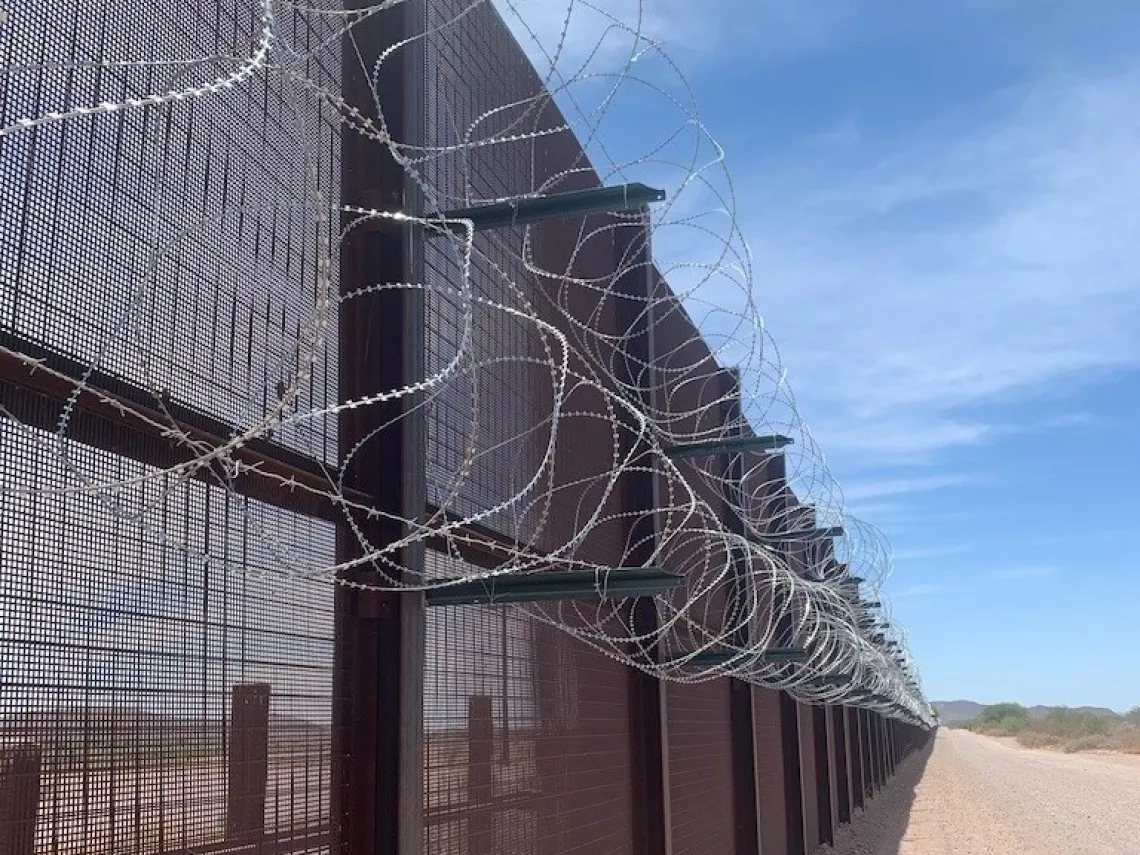UArizona Releases Report on Border-Crosser Deaths in Southern Arizona
Over the past few decades, the rate of recovered remains of undocumented border crossers has generally increased even as apprehensions have declined, which suggests undocumented migration in Arizona has become increasingly dangerous, the report finds.

Border wall. Photo by Robin Reineke.
April 19, 2021 – The University of Arizona Binational Migration Institute, in collaboration with the Pima County Office of the Medical Examiner, has released the report “Migrant Deaths in Southern Arizona: Recovered Undocumented Border Crosser Remains Investigated by the Pima County Office of the Medical Examiner, 1990-2020.” (Report is also available in Spanish.)
Drawing on data from the Pima County Office of the Medical Examiner, or PCOME, the researchers found that from 1990 to 2020, the remains of at least 3,356 undocumented border crossers, or UBC, were recovered in southern Arizona, with the majority being found since 2005.
Recovered UBC remains decreased in the region after peaking in 2010, but then increased from 124 in 2019 to 209 in 2020, the second-highest number on record.
The general increase in recovered UBC remains is not a consequence of more migrants crossing through southern Arizona, the researchers said. In fact, U.S. Border Patrol apprehension data indicate a steady decrease in apprehensions over the past two decades in the Tucson Sector.
“Though fewer migrants are crossing, they continue to die in large numbers and are perishing in some of the most treacherous and rugged terrain within southern Arizona,” said Daniel Martinez, co-director of the Binational Migration Institute, or BMI, which is housed in the College of Social and Behavioral Sciences. “The lethality of crossing through southern Arizona has generally increased over the past 20 years.”
According to the report, increased border enforcement and immigration policy changes likely contributed to the number of recovered UBC remains over the past two decades. As a result, migrants are increasingly crossing through more remote areas in order to avoid detection. Prior studies have also illustrated that segmented border militarization resulted in the “funnel effect,” or the redistribution of migration into remote and dangerous areas such as southern Arizona.
A new feature of the 2021 report, which builds on previous reports issued by BMI in 2006 and 2013, are maps showing the concentrations of where remains are being recovered over time.
The PCOME records suggest that migrants who have died in southern Arizona are largely male (84%), and, among identified decedents, 20-49 years of age (82%) and from México (80%). Most perished due to exposure (38%) or an undetermined cause of death (48%), and were successfully identified post-mortem (64%). The proportion of female UBC decedents has decreased since the early 2000s, while the share of Central Americans among identified UBC decedents has increased.
“This report is important because similar data is not available across the entire border,” said Robin Reineke, assistant research social scientist in the Southwest Center. “The Pima County Medical Examiner’s Office has curated the data carefully and meticulously, and they've also been transparent and share that data with researchers.”
In addition to Martinez and Reineke, colleagues at the Pima County Office of the Medical Examiner, the UArizona School of Geography, Development & Environment, Earlham College, Arizona State University, and Humane Borders co-authored the report.
“For us to understand the root causes of and find solutions to any social problem, we need to understand the extent of that issue, and that is what we are doing with this report,” said Martinez, who is also an associate professor in the School of Sociology. “Our hope is that policymakers and the public will consider the data in this report, as access to empirical evidence is crucial when formulating public policy and when addressing the root causes of critical social concerns such as border-crosser deaths along the US-México border.”
“This is not a partisan issue,” added Reineke. ‘We have seen multiple federal administrations come and go, and the crisis of unnecessary loss of life in the borderlands continues. It’s important to be informed about this issue before we undertake immigration and border control policies.”
Contacts:
Researcher Contacts:
Daniel Martinez
Binational Migration Institute
School of Sociology
daniel.martinez@arizona.edu
Robin Reineke
The Southwest Center
rreineke@arizona.edu
Media Contact:
Lori Harwood
College of Social and Behavioral Sciences
harwoodl@arizona.edu

